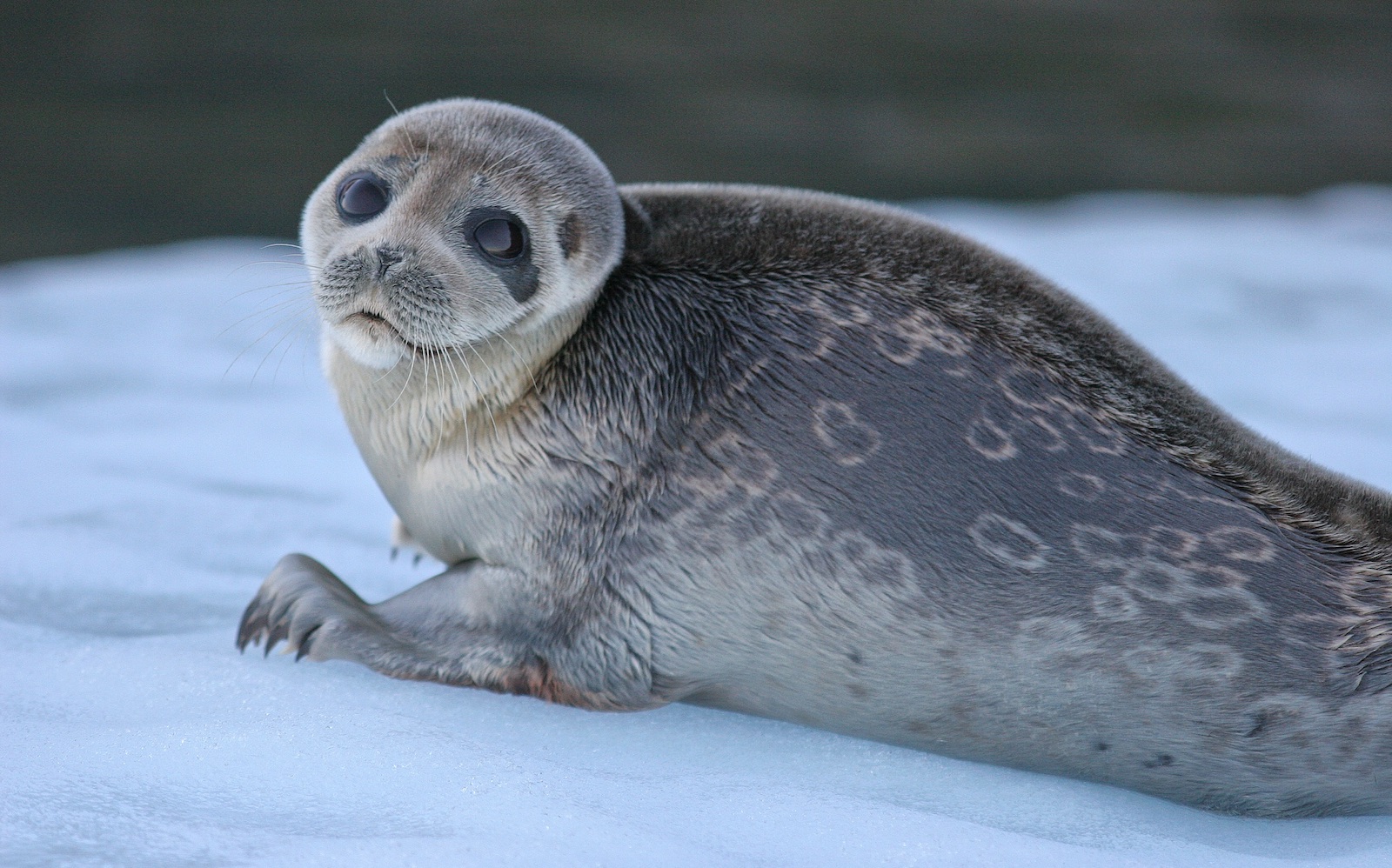For seals, melting glaciers offer only a temporary refuge from global warming
Seals in Svalbard now spend nearly all of their time near glacial fronts. They should make like a whale and leave.

Two decades ago, the ringed seals and beluga whales of Svalbard spent about half of their time foraging at glacial fronts, gorging themselves on polar cod.
Today, the two species have gone their separate ways, in a behavioral sense. For while ringed seals appear to be spending much more time at glacial fronts, belugas can now be seen in the deeper waters of Svalbard’s fjords. Scientists writing in a paper published this week in Biology Letters, suggest that’s a sign that the species has shifted its diet to include the new types of fish that have migrated to the region from the Atlantic with warming waters.
The whales’ changing diet, the scientists note, is not unique: Similar adaptations have been seen amongst seabirds and other species of marine mammal in the region. And this sort of dietetic flexibility bodes well for the survival of species that are unable to adapt in other ways to the effects of warmer climate.
Seals, on the other hand, may be headed the way of the auk. To be sure, spending more time at the glacial front may make most sense in the short term: plankton, which is the main prey of polar cod, still dominates the innermost parts of glacial fjords, and polar cod are still abundant in these areas. The retreat of whales may mean that there is, in fact, more food to go around.
[Fewer seals on the menu for Svalbard’s polar bears]
Unlike whales, though, seals are reliant on the glaciers for more than just food. Calved ice serves as platforms for things like moulting and birthing.
Svalbard’s glaciers are in a period of long-term decline and several have retreated so much that they no longer terminate in water. As a result, the glaciers that still do terminate in water have become “refugia,” as the authors describe them, for Svalbard’s ringed seals. Ultimately, though, seeking shelter in the same sort of environment may prove self-destructive.
Most obviously, this is because fewer glaciers mean less ice where seals can haul out. Beneath the surface, the disappearance of marine-terminating glaciers also changes the local marine ecosystem, leading the polar cod to migrate to other areas.
[Environmental group sues to secure Endangered Species Act protections for walruses]
The paper’s conclusions come after previous warnings by its authors about the effects of global warming on marine life in Svalbard. In October, for example, Kit Kovacs, of The Norwegian Polar Institute told Norway’s Institute of Marine Research that the disappearance of summer sea ice was making birthing and moulting more difficult for ringed seals.
And more recently, a paper published in January in Nature concluded that the disappearance of glaciers would result in the disappearance of an important foraging area for ringed seals and other marine species. Though not, it would seem, for belugas.